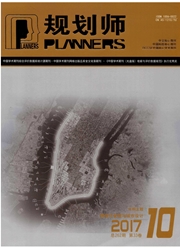

 中文摘要:
中文摘要:
基于"居住—就业"视角,运用因子生态分析方法和空间聚类分析方法,对南京市主城区流动人口空间分异现象进行分析。结果表明,南京市存在显著的流动人口空间分异现象,影响居住空间分异的5个主因子分别为迁居特征、住房条件、职业状况、来源地和经济地位,影响就业空间分异的5个主因子分别为职业状况、集聚方式、迁居特征、住房条件和经济地位。其中,居住空间分异受迁居特征影响较多,而就业空间分异与职业状况相关度较高。
 英文摘要:
英文摘要:
Using the spatial relationship of place of residence and place of employment,or residence-employment,this paper uses ecological and compactness analysis methodologies to study the spatial differentiation of the transient worker population in Nanjing's urban center.Results show that this population is highly differentiated based on a number of elements.The five major elements that influence residential differentiation are migration type,condition of residence,job,native place,and economic conditions.The five major elements that influence employment differentiation are job,residential community type,migration type,condition of residence,and economic conditions.
 同期刊论文项目
同期刊论文项目
 同项目期刊论文
同项目期刊论文
 期刊信息
期刊信息
